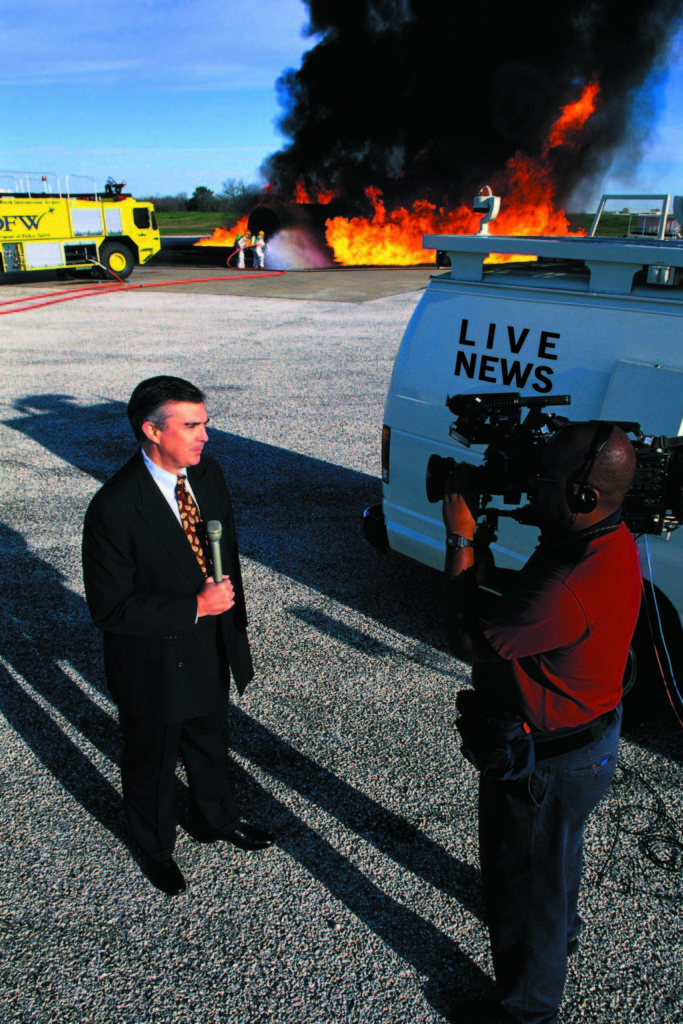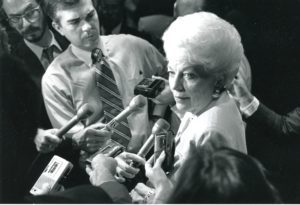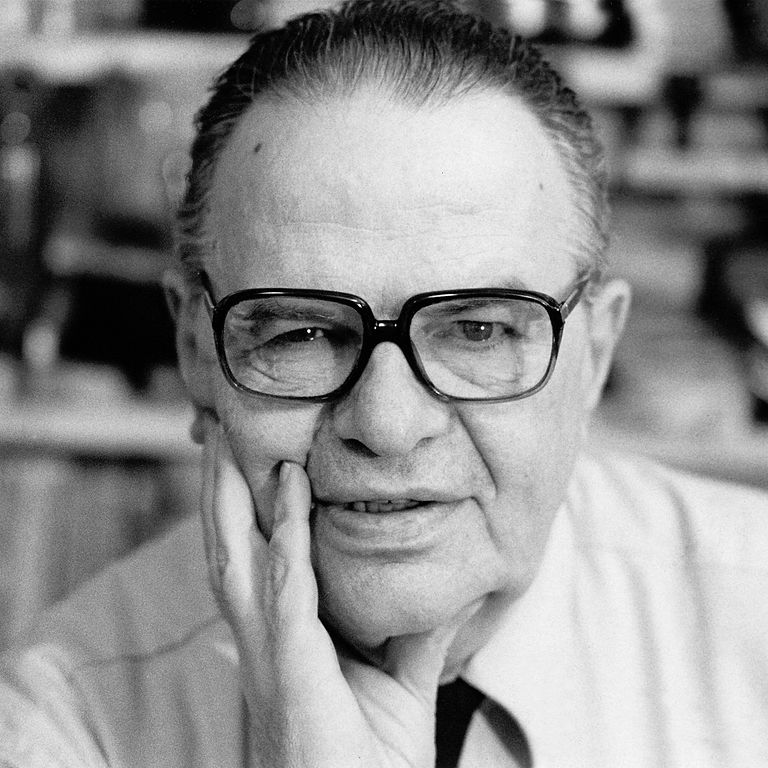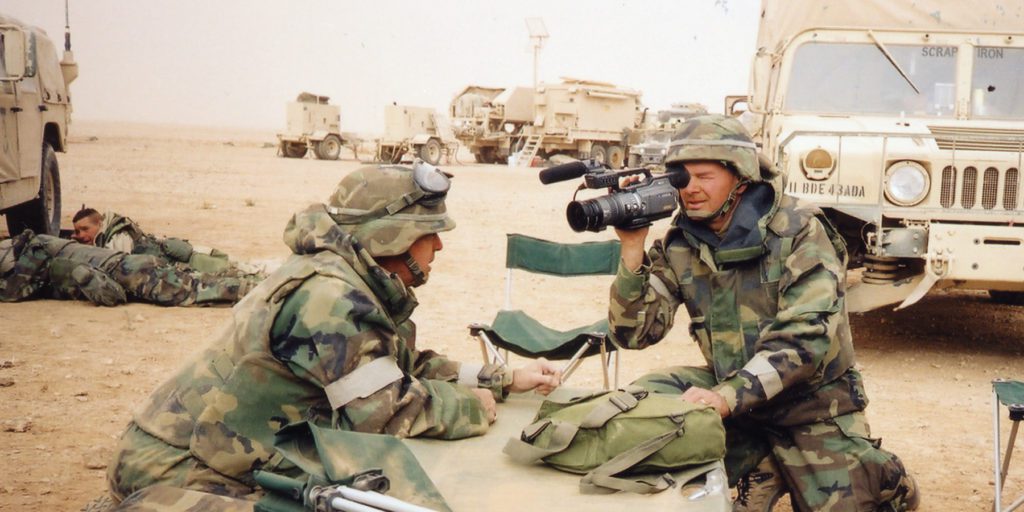
Robert Riggs reporting from Iraq during the Invasion in 2003. Pictured here with cameraman Billy Sexton with a Patriot Missile Battery from 552ADA while under fire.
My investigative reporting career evolved out of working for Congressman Wright Patman of Texas. I served as an investigator for the Joint Committee on Defense Production. The chairmanship rotated between Patman and Senator William Proxmire. Senior committee staff previously worked for the Central Intelligence Agency, military intelligence, and think tanks. Our work required a top secret security clearance.
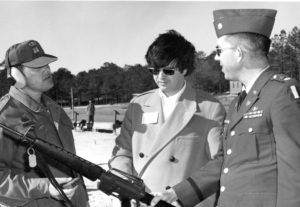
Robert Riggs Investigator for Congressman Wright Patman Receives A Briefing On the M-16 Rifle From U.S. Army Officers at Fort Jackson, S.C. in 1974
Congressman Patman also delegated the Committee’s press responsibilities to me. I admired some of the reporters who were digging for the truth. The Watergate scandal provided the backdrop for this. Congressman Patman tried to launch the first investigation into the burglary and bugging of the Democratic Campaign headquarters at the Watergate office building. Slate has produced an excellent podcast about Watergate. Episode #2 digs into Chairman Patman’s investigation. Here’s a link to download Patman’s investigative report from my personal archive.
I struck up a friendship with Pulitzer Prize winning newspaper reporter Clark Mollenhoff, Washington Bureau Chief of the Des Moines Register and Tribune. Mollenhoff broke numerous stories about the Watergate scandal and malfeasance in Pentagon weapons programs. His noteworthy books include: Game Plan for Disaster, The Pentagon, and The Man Who Pardoned Nixon.
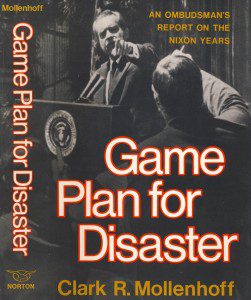
Clark Mollenhoff was a Pulitzer Prize-winning journalist, lawyer, syndicated columnist, and Washington, D.C. Bureau Chief for the Des Moines Register
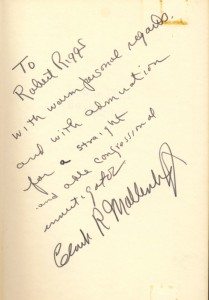
Pulitzer Prize Winning Reporter’s book inscription praises Robert Riggs’ Investigative Projects in Congress. Mollenhoff encouraged Riggs to leave Capitol Hill for Investigative Reporting in the wake of the Watergate Scandal
Mollenhoff was a charter member of the Investigative and Editors Association (IRE) Reporters from the non profit organization volunteered in 1975 to investigate the bombing murder of Don Bolles, a fellow reporter in Arizona. In those days it was a small close-knit group that provided great mentorship and resources. I highly recommend membership to any reporter.
After a stint on Capitol Hill and in two political campaigns, I felt a calling to journalism. I believe in some respects that it is like the priesthood—you really should feel called to do it. It is not without risks whether reporting from a war zone or dealing with news management that tries to slant or spike critical news stories to curry favor with advertisers and friends in high places.
With Mollenhoff’s encouragement I set out to break into television news and quickly learned that I needed an audition tape. How do you get an audition tape if you are not already on the news?
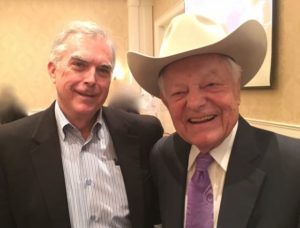
Robert Riggs & Bob Schieffer of CBS News at the Press Club of Dallas Tribute To Schieffer April 13, 2016
Fortunately, I had met Bob Schieffer who was then the Capitol Hill correspondent for CBS News. Bob is the genuine article. The nice man you see on TV is what you get in person. He took pity on a fellow Texan and secretly loaned his camera crew to me. My stand-ups were absolutely awful and I received many a rejection letter in response to my audition tape.
After receiving a particularly cruel assessment of my on air presence from a news director, I stopped by the Capitol Hill studio of Bob Squier. Bob had taught filmmaking at the University of Texas and we struck up a friendship from our Texas roots.
At that time, Squier was an upstart producer of political TV spots for Democrats. Squier worked out of a cramped English basement apartment a few blocks from the House office buildings. He became one of most sought after and respected consultants for presidential and senate campaigns in the nation.
The rejection letter had deflated me and I told Bob that I was ready to give up. Squier shared a story from when he worked on the floor crew of a small market television station in the Midwest. The news director charged on to the set at the end of a newscast. He belittled the anchor in front of the crew and fired him. The anchor loaded his family into a U-Haul and drove away in search of another job. Bob delivered the punch line, it was Harry Reasoner of ABC and 60 Minutes.
With spirits uplifted I returned to Schieffer for advice. He and his producer, Charlie Thompson, emphatically stated that my goal should be to work for WFAA-TV Channel 8 News in Dallas. They described it as a mini-news network with the best reporters, photographers, and staff in the nation. They stressed that WFAA’s excellence resulted from the leadership of its News Director, Marty Haag who they described as the Edward R. Murrow of local news.
I called Marty immediately and he invited me to fly to Dallas to meet in Channel 8’s Newsroom. During the meeting, Marty explained that I had the investigative skills, but was too green for a TV broadcast in a market the size of Dallas. He suggested that I freelance produce a series of investigative reports on a Texas related subject from Washington, D.C. for a new show on WFAA called Evening Magazine. That series of reports became my audition tape and led to a 30-year run in television news. I will forever be indebted to my WFAA mentors, Doug Fox, Marty Haag, and John Miller.
It took me more than a year to get my first reporting job in television. I would find that the same dogged determination to break into the industry would serve me well as a reporter.
Robert Riggs TV News Assignments
My assignments included covering: The White House during the administrations of President Ronald Reagan and President George H.W. Bush; Capitol Hill; The Pentagon; State Department; New York State Legislature; and the Texas Legislature.
I reported from the “eye of the storm” on some of the nation’s major breaking news stories. Those assignments included: the mass murder at a Luby’s Cafeteria in Texas, the 51-day Branch Davidian siege in Waco, the Oklahoma City bombing, the standoff with the Republic of Texas separatists at Fort Davis, numerous disasters, and three wars.
My reports appeared on CBS, ABC, Nightline, 60 Minutes, CNN, and ESPN.
Robert Riggs Investigative Reporter KTVT-TV CBS 11 News Dallas/Fort Worth 2002-2008
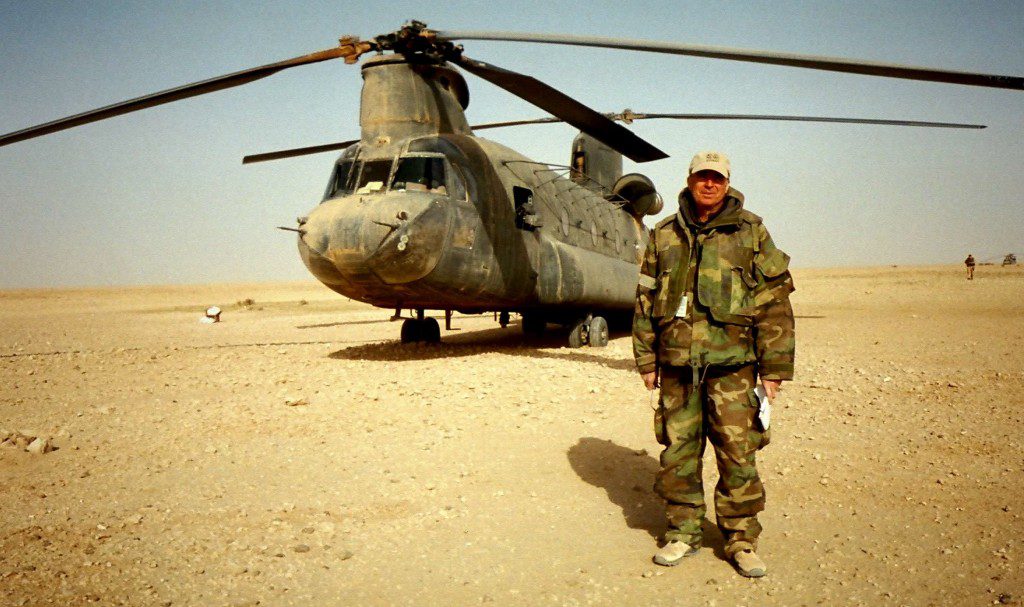
Embedded Reporter Robert Riggs waits out a sandstorm in Iraq with a crew from the 101st Airborne flying a CH-47 Chinook helicopter dubbed the “Apocalypse Cow”
As an embedded reporter for CBS 11 in 2003, I covered the invasion of Iraq from the front lines with an Army Patriot Missile air defense battalion 552ADA. The unit was among the lead elements of the attack. It contained PFC Jessica Lynch and fellow soldiers of the 507th Maintenance Company who were victims of a deadly ambush and capture during the opening days of the war.
A year later I received a call from a young officer in the battalion who said soldiers were being made into scapegoats for a flawed weapons system. I investigated the cause of two deadly friendly fire incidents involving the Patriot Missile System and a friendly fire missile strike on my own embed.
My investigative series became the featured subject of an edition of CBS 60 Minutes. It also changed the combat theater operations of the USAF.
My coverage of Iraq continued with a series of groundbreaking reports in late 2004 and early 2005. My producer Todd Bensman and I uncovered how terrorists were using the Internet to recruit suicide bombers for attacks against U.S. soldiers. We followed the trail to the United Kingdom which had become a breeding ground for jihadists. Five months after our story aired, terrorists hit the London transit system with a series of deadly bomb attacks. In its wake, British terrorism experts declared our earlier reports “prophetic”
In 2007, I exposed the wholesale theft of billions of dollars worth of Iraqi oil. Militias and corrupt officials were using the ill gotten gains to fuel violent attacks on the U.S. military.
Bensman and I produced a series of investigative reports on corruption inside Dallas City Hall. It resulted in the fraud conviction and a federal prison sentence for state legislator Terry Hodge who was a veteran Democrat. The reports also exposed a bribery scheme involving the Dallas Mayor Pro Tem. He was later sentenced to 18-years in federal prison.
Stories and links to videos:
- Corruption Investigation results in federal prison sentence for a senior Texas state representative
- Terrorism Investigation exposes Islamic extremists recruiting suicide bombers for Iraq through the Internet.
- Post 9-11 Homeland Security & Military Reports
- Criminal Justice Reporting
- Investigation of a deadly friendly fire incident during the Invasion of Iraq featured on 60 Minutes.
- Embedded Reporter with lead elements of the U.S. Army during the invasion of Iraq 2003.
Robert Riggs Investigative Reporter WFAA-TV Channel 8 News 1994-2000
Here’s a selection of stories:
Robert Riggs Austin Bureau Chief WFAA-TV Channel 8 News 1990-1993
I covered Ann Richards campaign for Governor and her administration in Austin. I am featured in the documentary film about her, “Ann Richards’s Texas”. The general election race for governor in 1990 between Richards and West Texas oil man Clayton Williams was dubbed Claytie and the Lady. It embodied bigger-than-life-characters of Texas legend.
Here’s a selection of stories from that time period:
Robert Riggs Washington, D.C. Bureau Chief WFAA-TV Channel 8 News 1981-1990
I covered The White House during the Administration of President Ronald Reagan and the early days of President George H.W. Bush. As Bureau Chief, Congress was my regular beat. We also did assignments at The Pentagon, State Department, federal agencies as well as major news stories on the East Coast.
Here’s a selection of stories from that time period.
Robert Riggs New York State Capitol Investigative Reporter WYNT-TV 1978-1980
9-11 Homeland Security Reports by Robert Riggs:
Air Defense Patrol, USAF Boot Camp, Predator Drone Missions Over Iraq, Dirty Bomb, Iraq Oil Theft Funds Terrorism.
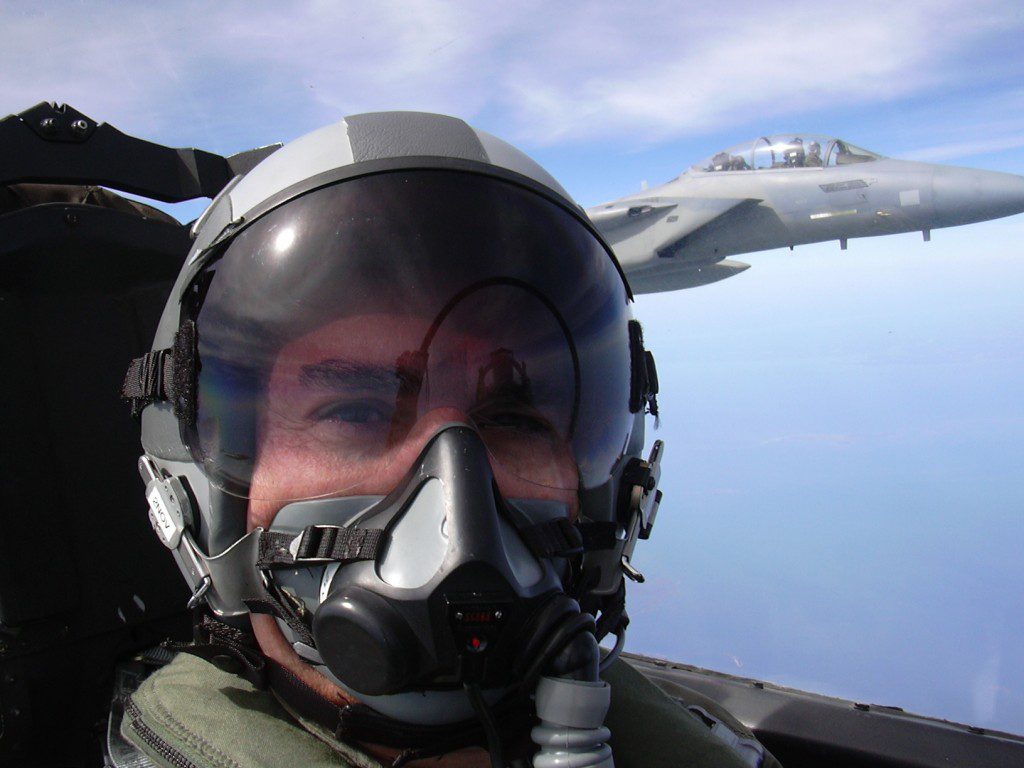
Robert Riggs is the first reporter allowed to fly on a post 9/11 air defense patrol. Pictured here in USAF F-15 fighter over New York City.
The University of Virginia Critical Incident Analysis Group (CIAG) and FBI asked me to serve as an expert member on a multi-disciplinary terrorism panel in 2000. We examined the architecture of terrorism and the symbolism of its targets. Meeting near the birthplace of Thomas Jefferson, the panel produced a landmark report entitled “Threats to Symbols of American Democracy”. The report underscored issues that would later tragically unfold during the 9-11 attacks.
Media Mentors to Robert Riggs
Edmund Carpenter
Robert’s online media work builds on a knowledge base formed by a long association with noted anthropologist, art expert, and filmmaker Edmund Carpenter.
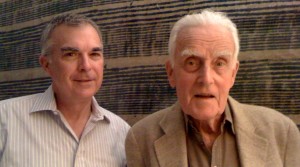
Robert Riggs with his friend and new media mentor Edmund “Ted” Snow Carpenter in New York City June 2009.
Carpenter contributed the intellectual foundation for the media theory of Marshall McLuhan who coined the phrase, “The Medium is the Message”.
Tony Schwartz
Ted Carpenter introduced me to Tony Schwartz who was a disciple of Marshal McLuhan and influenced my thinking about new media.
During our visits to Schwartz’s studio which was located on the west side in New York’s midtown, Tony would play taped examples of how to use audio to resonate with information stored in our brains.
Schwartz utilized what he called “striking a responsive chord” in the design of the famous “Daisy Ad”.
Tony explained how the ad tapped into fears people had about Barry Goldwater and nuclear weapons.
Press accounts often claim the ad stated that Goldwater would “push the button”.
No such explicit reference was made and it demonstrates the power of the commercial.
The TV spot only aired once and is credited for helping President Lyndon Johnson win election.
Robert Riggs Reporter Photo Gallery
